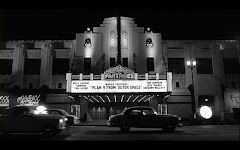 Part of the 1980's Project
Part of the 1980's Project Though it opened about five months beforehand, it's hard not to compare How to Beat the High Cost of Living to the more commercially successful, and better, film, Nine to Five. Both find a trio of middle class women in financial stand still while the men around them continue to succeed, spurring them into criminal acts, in Nine to Five it's the kidnapping of their chauvinistic boss, in How to Beat... it's robbing a ball of money that's part of a mall giveaway promotion. But where Nine to Five addresses real social issues in a fantastical and easily digestible matter, How to Beat has no social agenda or real grasp of the economic state of America in the late 1970's, resulting in just a baseless list of ills, whiny and uninteresting characters and for a film that purports to be from a feminist perspective, oddly sexist.
Like Nine to Five (and both Sex and the City movies for that matter), How to Beat...was directed by a man, Robert Scheerer, who's many credits are pretty much relegated to scripted television. Drive-in impresario Samuel Z. Arkoff is credited as a producer, his American International Pictures had been bought up by Filmways at this point (which would be bought by Orion, which would end up with MGM, whose catalog is now in the possession of FOX, but I digress). The script by Robert Kaufman (story credit to Leonora Thura) is structured like a pilot for a sitcom (it's score is also eerily reminiscent of Seinfeld's bass line driven opening theme in spots): three women (Susan Saint James, Jessica Lange and Jane Curtain, sorry for all the parenthesis in this paragraph) find themselves at a crossroad in their life: the divorcee mother of two (Saint James) is pregnant with her lover who won't agree to get married, the happily married Lange who's antique business is surviving only thanks to her husband's loans and is sued by said husband and the stay at home housewife (Curtain) who finds herself newly single after her husband runs away with a younger woman, decide to, I don't know, get back (?) by pulling off a heist and steal the contents of the above mentioned ball of money from the local Eugene, Oregon mall where they shop.
The film's major flaw is that not one of the three characters are distinctive or interesting for that matter. While the actresses themselves are fine (especially Lange, if you get what I mean...grr), there's really little difference other than superficial between the characters, and while granted it makes some sense since they went to high school together, the results are not compelling. There's a reason that most sitcoms have an array of archetype characters, contrast makes for tension and comedy. Compare them to the three leads in Nine to Five, while not racially diverse, there's no doubt a Lily Tomlin is not like a Jane Fonda who is certainly nothing like a Dolly Parton who all represented different aspects of social, political and regional identification. Unlike the Nine gals, the characters lack any ambition and constantly blame others for their current economic and social strives, a laundry list that includes Arabs, the Carter administration, European women, lesbians and even the United States military for assisting with the rebuilding of Japan and Germany after World War II. This could have made for something interesting, had the filmmakers took a critical viewpoint of the characters a la the Coen brothers, but alas, we are supposed to sympathize with them.
That's not to say the film is without its moments, when it finally settles into the schematics of the heist, some good comedic bits are derived from the situation, including Saint James' character needing to bring her kids with her to a store break-in when she can't find a sitter and Lange's character twice forgetting her inability to swim when trying to grab the stolen loot. However, the overall goodwill is tainted when the happy ending the characters so desire all revolve not around taking the money they obtained and building an independent life for themselves, but rather happily back into the arms of men (one of whom is played by Dabney Coleman from, you guessed it, Nine to Five, though way more sympathetic here). So, in summation, if you want to see a 1980 comedy about a trio of women committing a crime in an attempt to better their station in life, there's a better option than How to Beat the High Cost of Living, if I only I could remember it's title....












































No comments:
Post a Comment